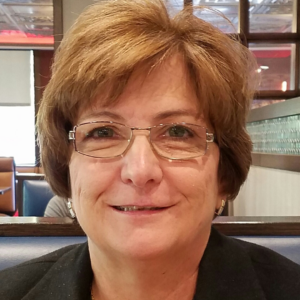Involving the Wider Community
It’s not always easy, but bringing the outside world to your residents can benefit everyone involved.
Increasingly, researchers are documenting how loneliness and isolation represent an extensive threat to public health, especially among older adults. Loneliness and isolation often lead to depression, cognitive decline, high blood pressure, obesity, heart disease, a weakened immune system, dementia and other chronic conditions that reduce quality of life and hasten the end of life. In fact, some studies have equated the health risks of loneliness to those of smoking 15 cigarettes every day.
“Loneliness is a red flag that you need to address,” says Carol Cummings, senior director of optimum life at Brookdale Senior Living, a Tennessee-based senior living company with more than 800 locations around the country. “We’re very aware of that and will look for ways to get residents engaged and connected.”
Still, across the senior living industry, a marked rise of loneliness among seniors in the last few decades has become a major concern, such that the National Institute on Aging is actively studying the difference between social isolation and loneliness, their risk factors and mechanics, and how they may lead to chronic medical conditions.
The NIA reports that “much of what we know about the causes and effects of social isolation and loneliness comes from the groundbreaking research of the late John T. Cacioppo, Ph.D., former director of the Center for Cognitive and Social Neuroscience at the University of Chicago and an NIA grantee.” His work found loneliness and social isolation are related but different, and understanding and parsing those differences could lead to more effective interventions.
But long before the NIA comes out with a blockbuster report on how to help curb loneliness and ease depression among seniors, long-term care facility operators are in the trenches, working with residents who deal with these issues head-on every day. One way some communities are addressing these issues is by creating greater outreach opportunities to the wider community.
“One of our residents, Sue Petrovski, wrote a book called Shelved: A Memoir of Aging in America,” Cummings says. “Sue felt like she was not a part of the wider world. She called senior living ‘Planet X,’” a lonely island she was stranded on. “That feeling is a big reason why we want residents to be connected to the wider community. They benefit from having that larger interaction and experiencing the flow of life.”
But it’s not a one-way street. “The community benefits, too. Many people have an inaccurate picture of what living in senior living is like. They think seniors have feeble minds, but through interactions, they can develop an understanding of just how vibrant our residents really are. Our residents have a lot to offer and that helps break the stereotypes about senior living. It really goes toward our goal of changing the perception of aging.”
Getting seniors out into the community is one way to reduce loneliness, but as Cummings notes, “not everyone wants to go on group outings.” Therefore, sometimes you need to bring the rest of the world into your community.
Letting the Community In
There are many ways to bring the wider community into your facility, from lectures and trainings for local physicians to cultural events and children’s programs. All of them can provide value to your residents, and there’s no one right answer. You’ll need to evaluate the resources available in your area and look for other organizations with which to connect to help bring in volunteers and community members who want to be involved.
For example, Eleonora Tornatore-Mikesh, chief experience and memory care officer at Inspīr, a senior living community in Manhattan, says Inspīr has forged partnerships with local cultural institutions to help create “intergenerational programs. It’s critical to integrate already excellent programs that deal with the older population especially for people with dementia.” These educational partnerships end up being highly valuable for both residents and the community at large.
There are also lots of ways to entice other groups and individuals to come to your residents. Educational credit is a carrot some communities use. “One of the things we do is we provide continuing education units for some of our education lectures,” so that local clinicians and other community members who need credit for certain college-level subject matter or programs can advance their education, Tornatore-Mikesh says. “We offer caregiving classes and CEUs for social workers by hosting local physicians to talk about different comorbidities, whether it’s diabetes or Parkinson’s. We also host other professionals—legal or financial for example,” who present on their area of expertise. These programs are open not just to residents, but also the wider community if they want to come hear what’s being discussed. “We’re really acting as a community liaison for education,” Tornatore-Mikesh says, and these sorts of programs do draw younger community members into the building.
It’s a win-win for everyone. Tornatore-Mikesh says integrating entertainment and educational programs brings a younger generation onto the property where they often interact with residents, who get a boost out of speaking with and connecting with other community members. It makes them feel less isolated and like they’re stranded on a senior island. And younger people might just learn something from these residents.
The benefits, though hard to quantify, are real. As both a neurologist and as the medical director at a memory care center, Dr. Douglas Scharre, of the Ohio State University Wexner Medical Center and medical director of the Memory Disorders and Neurobehavioral Clinics in Columbus, says he sees both sides of caring for people with dementia in an assisted living facility, and bringing the community into your facility to interact with seniors will provide benefits to all involved.
When developing programs, he reminds facility owners and operators that “people with Alzheimer’s and dementia are living in the moment.” They can’t remember the past, but engaging them with activities that they enjoy, that stimulate cognitive function, and that help them interact with other people offer big health benefits. “If you’re interacting with humans and smiling and seeing a picture and listing to a nice music and looking at photographs, that’s fabulous.” And the more people you can invite into your facility to interact with residents, the better. “People should not be concerned to volunteer there. Be friendly. Have a conversation.”
He also notes you should keep in mind that challenging or difficult behaviors are “part and parcel of having Alzheimer’s or dementia. Part of the brain is being destroyed by plagues and tangles,” and some 70% of people with dementia will exhibit challenging or undesirable behaviors from time to time. But, with the right training, your staff can keep themselves and residents safe and provide high-quality care that’s actually worthy of the label “memory care.” The key lies in better education of staff so that they react appropriately when a senior with dementia is struggling with less desirable behaviors.
Cummings says “it’s important for the staff at any community to be connected in civil affairs, to learn and understand ways they can connect with the community. Maybe join the Chamber of Commerce, the Rotary Club, or attend town hall meetings.” These clubs often involve residents and are always looking for service projects; volunteering at a senior living facility often fills that niche.
As you begin reaching out, “you can wind up with spontaneous or organic connections,” Cummings says. For example, she relates the story of a town where one Brookdale community is located that had a “Christmas tree walk, where people would visit places to see decorated trees. Our community got on that list and our residents decorated several trees for people in the town to come and see.”
Other communities have found other ways to bring the wider community in. Some communities offer trick-or-treating for kids or arts projects. “There are many meaningful connections to be had between older people and college kids. You can have high school or college students teaching your residents about new technology or computer skills.”
In addition, “partnering with local churches or clergy to offer services and one-on-one time with residents is another way to help make those larger connections.” Local fire and police departments and other first responders also often find meaning in participating in programs at senior centers. “Many fire and police departments will come and talk to residents about safety or may even conduct an active shooter training. Firefighters could come in for lunch, where your residents can thank them for what they do. You can also look for partnerships with a local senior center or the YMCA where you could bring your residents for programs and fellowship.”
Bottom line: it almost doesn’t matter what the specific draw is, Cummings says, “just look for organic ways to get involved in the larger community.”
One word of caution, however is that you should “be mindful of whether it’s a meaningful interaction for both groups.” For example, one community brought in a group for pre-school students, “and it wasn’t well organized,” and the program didn’t work the way it was intended. Therefore, “for younger children you may want to consider a reading program, where the children benefit by being read to and the residents have a better sense of purpose.”
So how can you find out what will engage residents most? Just ask them. Survey your residents as best you can to find out what will capture their interest and make them feel happy and safe. “Make it very customized and intentional,” Tornatore-Mikesh says. “Those are the two things I can’t stress enough. If you can do that, it’s amazing what happens.” And based on the results of the survey, you may have some new and interesting ideas of how to go about bringing the outside world to your residents in ways they will enjoy and benefit from.
“It all starts with a culture of friendliness in a community,” Cumming says. “People have a higher sense of social well-being when they are in a community where others smile, talk, and help each other achieve their purpose.”

Elaine K. Howley is a freelance journalist for various publications. An award-winning writer specializing in health, fitness, sports and history, her work has appeared in numerous print and online publications, including U.S. News, AARP.org, espnW, SWIMMER magazine and Atlas Obscura. She’s also a world-record holding marathon swimmer with a passion for animals and beer. Contact her via her website: elainekhowley.com.
Related Articles
Topics: Activities , Alzheimer's/Dementia











